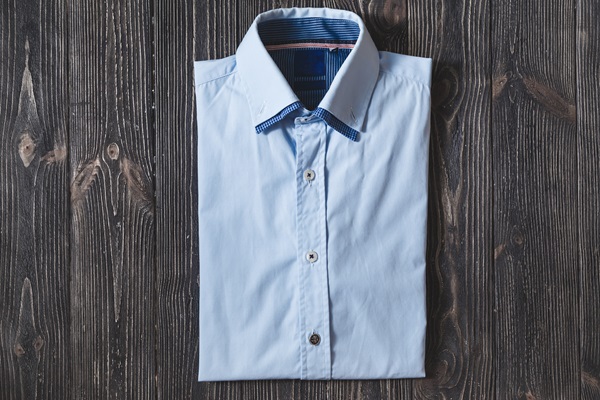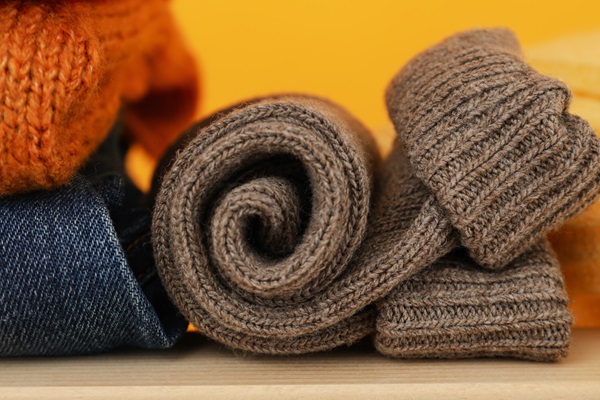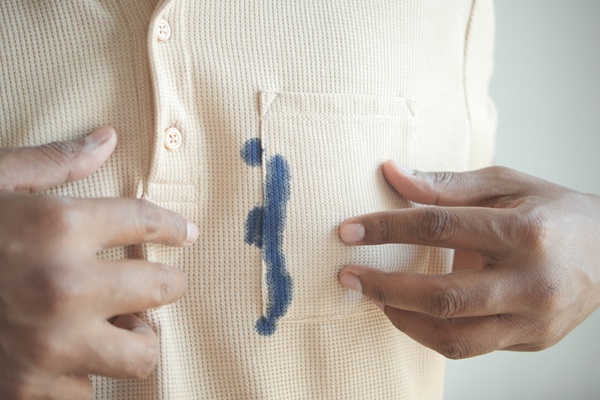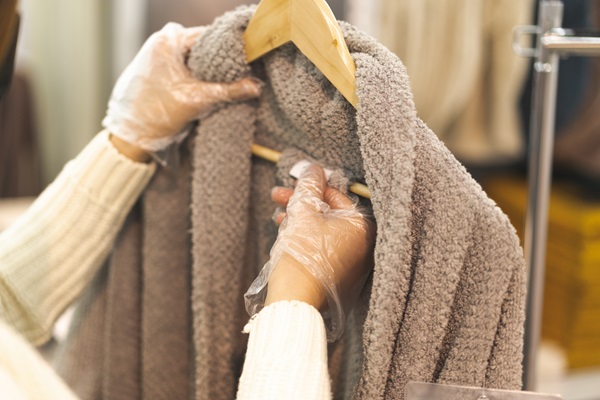Washing clothes correctly is crucial not only for maintaining their appearance but also for extending their lifespan. Different kinds of fabrics require specific care techniques, and understanding these can transform the way you do your laundry. This post aims to provide comprehensive guidance on how to wash different kinds of clothes, from everyday cotton to delicate silk. By following these methods, you can ensure that your clothes remain in pristine condition for longer. Whether you’re a laundry novice or looking to refine your techniques, these tips will prove invaluable in your daily routine.
Contents
Identifying and Caring for Different Fabric Types

The first step in proper clothing care is recognizing the type of fabric. Fabrics like cotton, wool, silk, synthetic fibers, and blends each have unique properties. For instance, cotton is known for its breathability and durability, while silk is prized for its delicate texture. Wool provides excellent warmth but can be prone to shrinking, and synthetic fibers offer versatility but may require special attention to avoid damage. Understanding these characteristics is essential for choosing the right washing method and ensuring your clothes retain their quality and appearance.
Fabric care labels are your garments’ instruction manuals. These labels, often overlooked, are key to extending the life of your clothing. They use universal symbols to indicate the preferred washing temperature, drying method, and ironing instructions. Learning to interpret these symbols can prevent common laundry mishaps like shrinkage or color bleeding. For example, a triangle symbol indicates bleaching guidelines, while a square with a circle inside suggests drying procedures. Paying attention to these details ensures that each piece of clothing receives the care it needs.
Cotton and Linen

Cotton garments are a staple in most wardrobes, known for their comfort and durability. When washing cotton, it’s essential to pre-treat any stains to ensure complete removal. Use warm water for regular loads, but opt for cold water to prevent shrinking and color fading. Most cotton items can withstand regular washing machine cycles, but delicate pieces may require a gentler approach. Additionally, avoid overloading the washing machine, as this can lead to uneven cleaning and excessive wrinkling, diminishing the fabric’s quality over time.
Linen requires a different approach due to its delicate nature. This natural fiber is known for its lightweight and breathable qualities, making it a favorite for summer wear. Always wash linen in cold or lukewarm water to prevent shrinkage, and use a gentle cycle to maintain its structure. Avoid wringing out linen garments, as this can cause irreversible damage. When drying, lay the items flat or hang them to preserve their shape. Ironing linen when it’s slightly damp can ease out wrinkles effectively, helping maintain its crisp appearance.
Silk and Lace

Silk, with its luxurious feel, demands careful handling. Always check the care label; some silk items may require dry cleaning, while others can be hand washed. When hand washing, use a mild detergent and cool water to protect the fabric’s delicate fibers. Submerge the garment gently, avoiding any harsh scrubbing or twisting that can damage the silk. Rinse thoroughly to remove soap residues. When drying, avoid direct sunlight and instead lay the garment on a flat surface, reshaping it as needed. This method preserves silk’s sheen and prevents water spots.
Lace, elegant and intricate, requires a gentle touch. Hand washing is often the safest method, using cold water and a mild detergent. Be cautious not to stretch the lace fabric while washing, as it can lose its delicate pattern. Rinse carefully to ensure all soap is removed. Gently press the water out without wringing, as this can cause distortion. Lay the lace flat on a towel to dry, reshaping it to its original form. Proper care of lace garments will keep them looking pristine, preserving their delicate beauty for years to come.
Wool and Cashmere

Wool garments, known for their warmth and durability, require specific care to maintain their quality. Always use cold water for washing wool, as hot water can cause shrinkage. Select a detergent designed for wool and use a gentle cycle or hand wash. After washing, avoid twisting or wringing the garment; instead, gently squeeze out excess water. Lay wool items flat to dry, reshaping them to their original form. This prevents stretching and distortion, keeping your woolen clothes in excellent condition. Proper wool care also includes regular brushing to remove surface soil and restore the fabric’s natural texture.
Cashmere, synonymous with luxury and softness, demands attentive care. The debate between hand washing and dry cleaning can be resolved by checking the garment’s care label. If hand washing is suitable, use lukewarm water and a mild detergent. Gently swish the garment in the water, avoiding any rough handling. Rinse thoroughly with clean water. To dry, lay the cashmere item flat on a towel, away from heat and direct sunlight. Proper storage is crucial for cashmere; store it in a breathable bag to prevent damage from moths and pilling, ensuring your cashmere stays soft and luxurious.
Polyester, Nylon, and Acrylic

Synthetic fabrics like polyester, nylon, and acrylic are popular due to their durability and ease of maintenance. When washing these materials, use warm water and opt for a regular or gentle cycle, depending on the garment’s sturdiness. Synthetics tend to attract static electricity, so consider using a fabric softener to minimize this issue. Additionally, these fabrics are prone to melting under high heat, so it’s crucial to avoid hot water and high-temperature drying.
Blended fabrics, combining natural and synthetic fibers, offer the best of both worlds but can be challenging to care for. The key is to focus on the most delicate fabric in the blend. Generally, use a gentle cycle and cold or lukewarm water. Air-drying is preferable, but if you must use a dryer, choose a low-heat setting. This approach helps to preserve the integrity of the blend, ensuring that your clothes maintain their shape and texture over time.
Advanced Washing Tips and Tricks

Effective stain removal can significantly extend the life of your clothes. For oil-based stains, pre-treat with a stain remover or liquid detergent. Protein-based stains like blood or sweat require cold water to prevent setting. Always treat stains as soon as possible and avoid using hot water initially, as it can set many types of stains permanently.
Preserving the color and texture of your clothes is as important as getting them clean. To prevent colors from fading, turn garments inside out before washing and use a detergent formulated for colored fabrics. Cold water is generally better for maintaining color vibrancy. Additionally, avoid over-drying clothes, as this can lead to fabric wear and color loss. Air-drying, when possible, is the gentlest option for most fabrics.
Special Considerations for Activewear

Activewear, made from high-tech synthetic materials, requires special attention to maintain its functionality. After a workout, rinse these garments to remove sweat, which can break down the fabric over time. Use a mild detergent and cold water, and avoid fabric softeners, as they can impair moisture-wicking properties. Air-drying is ideal for activewear, as high heat from dryers can damage the elasticity and moisture-wicking features of the fabric.
Swimwear also demands specific care due to its exposure to chlorine and saltwater. Rinse swimwear in cold water immediately after use to remove chlorine or salt, which can degrade the fabric. Hand wash with a mild detergent and avoid wringing out the swimsuit to keep its shape. Air-dry away from direct sunlight to prevent fading and maintain the elasticity of the fabric.
Handling Outerwear and Heavy Garments

Outerwear like jackets and coats often feature a combination of heavy fabrics and hardware, making them tricky to wash. Check the care label for specific instructions – some may be machine washable, while others require professional cleaning. If machine washing is possible, use a gentle cycle and cold water to prevent damage to any hardware or special coatings.
Heavy garments like blankets and comforters need ample space to get clean, so avoid overloading your washer. Use a mild detergent and a gentle cycle with cold water. For drying, choose a low heat setting and periodically fluff and rotate the item to ensure even drying. For items too large for your home washer, consider using a commercial laundry facility or professional cleaning service.
Unlock the Secrets of Effective Laundry Care
Mastering the art of washing different types of clothes preserves their quality and extends their lifespan and reflects your personal care and attention to detail. Each fabric, from cotton to cashmere, has its unique needs, and catering to these requirements ensures your wardrobe remains vibrant and durable. Remember, a little knowledge goes a long way in laundry care. Consider applying these tips in your next laundry session, transforming this routine chore into an act of preserving your cherished garments.


